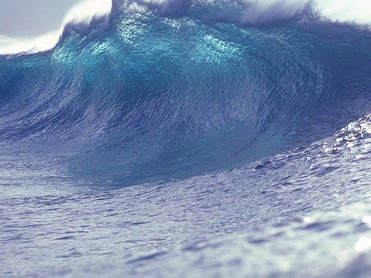|
"A tsunami of stuff" is how a colleague of mine aptly describes what is currently washing into the marketplace for vintage and antique goods. As baby boomers such as myself age and downsize, more and more collections are coming to market. The unfortunate reality, however, is that there are fewer and fewer buyers who want these things. The Millennial and I-Gen cohorts in particular want little to do with traditional things such as silver, china, crystal, and period furniture. For many of them, it is merely clutter. Anything that will not go into the dishwasher or needs polishing is particularly anathema.
This in turn has caused significant drops in price for most categories. It has also caused a great deal of angst for people who were either counting on their children to inherit and cherish heirloom items or else had thoughts of garnering a tidy nest egg at sale time. Both are increasingly uncommon scenarios, however. And, it is something that I frequently encounter when helping clients downsize or bring their treasures to market. My advice to everyone in such a situation is to first be pragmatic. What someone paid for an item in 1985 has no bearing on what you will receive for it in 2017. The digital era has upended literally centuries of tradition in passing down items and it is important to understand this. Where markets will ultimately settle is hard to predict but for now, the trend is still downward or flat. A second piece of advice is to look closely at donation vs. selling. Depending on one's tax situation, the depressed prices for many things such as early furniture may make it more financially advantageous for someone to donate a piece as opposed to putting it at auction, where a commission will be taken out. So, be sure to do your financial homework before deciding on a course of action. If selling does make sense, consider your financial needs and time frame. If time is short and/or money is needed, it may make sense to just send everything to auction and be done with it. If you have the luxury of time and are so inclined, piecing things out via online platforms or through consignment stores may be a better route to go. As always, each situation is going to be different but the key takeaway is to carefully consider your situation before moving forward. In my next post, I'll share some insights into ways of getting the most money for your items if you do decide to bring them to market. As I write this, Hurricane Irma is bearing down on the state of Florida. With landfall still five days out, it is unsettling to see certain areas of local stores here in Sarasota completely empty. It's the usual suspects: the bread aisle, the bottled water section, and the battery displays plus a few others that I probably missed. Gas stations are sporadically running out of fuel as well.
My takeaway from this is that it is never too early to start preparing for a natural disaster. Waiting until the last minute can end badly, and this is especially true when protecting your tangible assets. Unlike a loaf a bread, an appraisal report for a valuable pieces of art, antique furniture, or glass isn't something that you can just grab off the shelf. It requires finding a reputable appraiser, getting them in front of your item or items, and allowing them the necessary time to do any research required and prepare the report. What can you do, though, in the immediate term? First and foremost, document everything of note either via video or individual photos. Second, put in a call to your insurance agent to see what is or isn't going to be covered in case there is damage to your possessions. Most homeowner's policies require a separate policy, often known as a fine arts rider, for valuable items to be covered. Lastly, do what you can to protect any items of note if you suspect a strong risk of damage to your house. If flooding might be an issue, get valuable pieces of furniture to the highest level possible. Pack smaller delicate items like glass in diaper wraps and then put into sturdy plastic tubs. Art work can be crated or, if small, stored in water-tight containers. Water is typically the biggest foe of artwork. Once the threat of natural disaster has passed, plan for the future... something my wife and I are going to be doing, by the way. We have a large generator but suddenly discovered that the generator panel that came with the house is only wired only for smaller circuits. So, even with a powerful generator, we will be able to make coffee but not run the all-important AC. That we only noticed this three years after moving in is a prime example of complacency on our part. Once Irma is past we will have an electrician come and upgrade the panel but in the meantime will be sipping our coffee in the heat and humidity if the power goes out. Drawing parallels from this, if you find yourself with valuable items that need appraising for insurance coverage but have a threat looming, first do what you can to physically protect your items. Then, when storm has passed, proceed methodically and get the coverage you need. It will give you considerable peace of mind and also potentially protect your financial bottom line. |
AuthorBryan H. Roberts is a professional appraiser in Sarasota, FL. He is a member of the Florida State Guardianship Association and currently serves on the board of the local FSGA chapter. He is a past president of the Sarasota County Aging Network, a non-profit that provides grants to other non-profits benefiting seniors in need and is also a board member of PEL, an area non-profit whose resale store profits support programs and scholarships for at-risk and disadvantaged youth. He is certified in the latest Uniform Standards of Appraisal Practice (USPAP) Equivalent Archives
May 2024
Categories |



 RSS Feed
RSS Feed